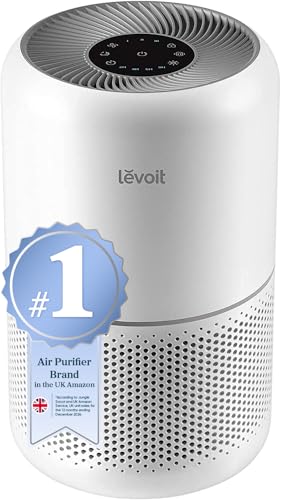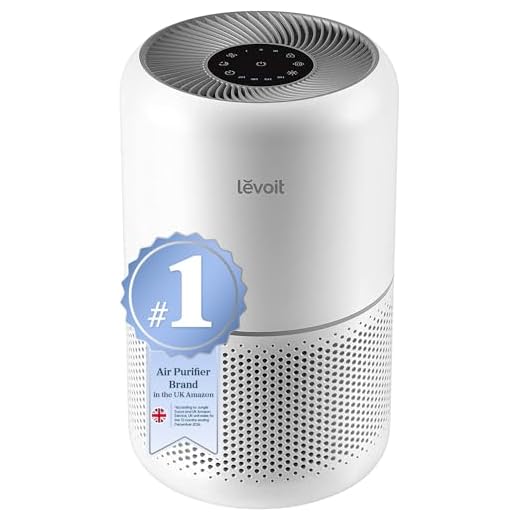








Start by consulting your veterinarian to confirm the diagnosis. Skin tests or blood tests can identify specific allergens affecting your pet. Once you know what triggers the symptoms, you can take targeted measures to alleviate discomfort.
Consider implementing a regular grooming routine to reduce the amount of pollen and dust that your furry friend brings indoors. Bathing your pet with a gentle hypoallergenic shampoo can also help remove irritants from their coat and skin. Frequent brushing will further minimise allergens, keeping both your home and your companion comfortable.
Monitor the environment closely. During high pollen seasons, limit outdoor activities, especially during peak hours. Creating a clean living space by vacuuming regularly and using air purifiers can significantly improve the quality of the air your pet breathes. Make sure to wash their bedding frequently to eliminate dust mites and other potential allergens.
Consider dietary adjustments. Some pets benefit from a diet rich in Omega-3 fatty acids, which may help reduce inflammation. Probiotics can also support their immune system, making them less reactive to allergens. Always consult with a vet before making any changes to your pet’s diet to ensure their specific needs are met.
If symptoms persist, your vet may recommend antihistamines or other medications specifically formulated for animals. Follow their guidance closely to ensure the safety and well-being of your furry friend.
Relief Strategies for Allergic Reactions in Canines
Start by consulting a veterinarian for tailored advice and potential medication. Antihistamines like diphenhydramine can provide immediate relief, but always verify the dosage with a professional. Corticosteroids may also be prescribed for more severe symptoms.
Implement regular bathing routines using hypoallergenic shampoo to remove pollen and allergens from fur. This practice not only soothes irritated skin but also reduces overall allergen exposure.
Consider using air purifiers in living spaces. These devices can filter out airborne allergens, creating a more comfortable environment. Additionally, keep windows closed during high pollen seasons to limit outdoor allergens entering the home.
Adjusting the diet can also be beneficial. Some owners find that adding omega-3 fatty acids, such as fish oil, helps improve skin health. Supplements or specially formulated food may alleviate symptoms over time.
Regular grooming is crucial. Brushing your pet frequently removes allergens trapped in their coat. This simple step can significantly decrease the symptoms associated with allergic reactions.
Monitor your pet’s behaviour. If symptoms persist despite these measures, document them and share with your vet for further evaluation. They may suggest allergy testing to identify specific triggers.
Recognising Symptoms of Allergic Reactions in Canines
Watch for excessive scratching or licking. If your furry friend is constantly pawing at their face or body, this could indicate irritation from airborne allergens. Red or inflamed skin may also be visible, especially around the ears, paws, and belly.
Respiratory Indicators
Keep an eye out for sneezing fits or coughing. A sudden increase in these behaviours often signals discomfort due to pollen or dust. Clear nasal discharge might accompany these symptoms, making it easier to identify the underlying issue.
Eye Discomfort
Look for watery or red eyes. If you notice your pet squinting or rubbing their eyes frequently, this could point to an allergic reaction. Swelling around the eyes is another sign that shouldn’t be overlooked.
Changes in behaviour, like increased lethargy or withdrawal, can also be telling. If your playful companion seems more subdued than usual, it’s worth investigating further.
Monitoring these signs closely can help you spot allergies early and seek appropriate remedies. Keeping a detailed diary of symptoms and potential triggers can aid in identifying the cause more effectively.
Consulting Your Veterinarian for Diagnosis
Seek veterinary advice if you suspect your furry friend is suffering from allergies. A thorough examination is key to determining the cause of discomfort. Your vet may perform a skin test or blood work to identify specific allergens. This step is crucial, as it helps to rule out other conditions that may mimic allergy symptoms, such as infections or skin disorders.
During the visit, provide detailed information about your companion’s symptoms, including onset times and any changes in behaviour or environment. This data can assist in pinpointing triggers. Your veterinarian may suggest an elimination diet to rule out food allergies, which can sometimes be a hidden culprit behind allergic responses.
Discuss potential treatment options tailored to your pet’s needs, including antihistamines or immunotherapy. Each animal reacts differently, so personalised guidance is essential. Regular follow-ups may be necessary to adjust the approach based on how well your companion responds to the initial treatment plan.
Keep in mind that some cases may require referral to a veterinary dermatologist for specialised care. Their expertise can provide additional insights and advanced treatment strategies. Your vet can guide you through this process, ensuring your beloved pet receives the best possible care.
Medications to Alleviate Allergic Reactions
Antihistamines are often the first line of defence for alleviating discomfort caused by environmental allergens. Common options like cetirizine and diphenhydramine can provide relief, but always consult your vet for the appropriate dosage tailored to your furry friend’s needs. Some antihistamines may cause drowsiness, so monitor your companion for any sedative effects.
Corticosteroids
For cases where antihistamines aren’t sufficient, corticosteroids may be prescribed. These medications reduce inflammation and itching effectively. It’s crucial to follow your veterinarian’s guidance carefully, as long-term use can lead to side effects. Regular check-ups will help manage any potential risks.
Topical Treatments
In addition to systemic medications, topical treatments such as medicated shampoos can soothe irritated skin. Look for products that contain oatmeal or aloe vera, which are known for their calming properties. Additionally, consider incorporating best high oil dog food for dry skin uk into your pet’s diet, as it may help maintain skin health and combat dryness associated with allergic reactions.
Home Remedies to Soothe Your Pup’s Discomfort
Cool baths provide immediate relief from itchiness. Use lukewarm water to wash your furry friend, adding a bit of oatmeal to the bath for its soothing properties. After the bath, gently towel dry and avoid any harsh shampoos that could worsen the irritation.
Natural Anti-Inflammatory Options
Consider incorporating certain natural substances into their diet. Fish oil, rich in omega-3 fatty acids, can help reduce inflammation. Mixing a small amount into their food might ease symptoms over time.
Herbal Soothing Agents
- Chamomile tea can be brewed and allowed to cool, then applied with a clean cloth to irritated areas.
- Aloe vera gel, applied topically, can soothe skin irritation. Ensure it’s pure and free of additives.
Keep an eye on their environment. Regularly cleaning their living space can reduce allergens. Use a damp cloth to wipe down surfaces and vacuum frequently to remove dust and pollen.
Consider using a humidifier to keep the air moist, especially during dry seasons. This can help alleviate dry skin and respiratory discomfort.
Lastly, a gentle massage can help ease tension and promote relaxation. Use soft strokes to comfort your companion, making it a calming experience for both of you.
Adjusting Your Companion’s Environment to Reduce Allergens
Consider keeping windows closed during high pollen seasons. Use air conditioning with a clean filter to maintain a comfortable atmosphere indoors. Regularly vacuum carpets and upholstery with a HEPA filter to minimise dust and pollen accumulation. A simple tip: use a damp cloth to wipe surfaces, which helps trap allergens instead of spreading them.
Creating a Clean Living Space
Establish a designated area for your furry friend that is free from allergens. Investing in hypoallergenic bedding can make a significant difference. Wash bedding weekly in hot water to eliminate potential irritants. If your pet spends time outdoors, consider rinsing their paws and coat upon returning home to remove any pollen or dust.
Indoor Plants and Air Quality
Be cautious with indoor plants; some may provoke allergic reactions. Choose non-toxic, low-allergen varieties. To enhance air quality, consider using an air purifier equipped with a HEPA filter. This can significantly reduce airborne particles and improve overall comfort.
| Action | Description |
|---|---|
| Close Windows | Prevents outdoor allergens from entering the home. |
| Use HEPA Filter Vacuum | Effectively captures dust, pollen, and other irritants. |
| Wash Bedding | Removes accumulated allergens, providing a clean resting place. |
| Choose Low-Allergen Plants | Reduces the risk of triggering allergic reactions indoors. |
| Invest in Air Purifier | Helps to maintain cleaner air by filtering out pollutants. |
Adjustments in your companion’s environment can greatly enhance their comfort and well-being. Taking proactive steps ensures they enjoy a happier, healthier life, even during allergy season.
Monitoring and Managing Ongoing Allergies
Regularly observe your pet’s behaviour and physical condition. Keep a journal to track symptoms like sneezing, itching, or redness. This record can help identify patterns related to specific allergens, whether they’re seasonal or environmental.
Consider implementing a routine for baths using hypoallergenic shampoos. This can help remove pollen and other irritants from their coat, alleviating some discomfort. Aim for weekly baths during peak allergy seasons to minimise exposure to allergens.
Invest in air purifiers for your home. These devices can significantly reduce airborne allergens. Choose models with HEPA filters for maximum effectiveness. Additionally, ensure regular cleaning of your living space, including vacuuming with a HEPA-filter vacuum to capture allergens trapped in carpets and upholstery.
Monitor your pet’s diet, as food allergies can exacerbate reactions. Keep a close watch for any changes in their condition after introducing new foods. If you suspect a food-related issue, consult your vet for a dietary elimination plan.
Utilise over-the-counter antihistamines after discussing them with your vet. These medications can help control symptoms. However, ensure you’re using the correct dosage tailored to your pet’s weight and health status.
Stay informed about local pollen counts and adjust outdoor activities accordingly. On high pollen days, limit walks to early mornings or late evenings when counts are lower. Consider using protective gear like doggy boots or a coat to shield against irritants.
Lastly, maintain regular veterinary check-ups. Ongoing assessments can help adjust treatment plans as necessary, ensuring your companion remains comfortable through allergy seasons.









